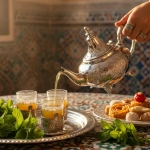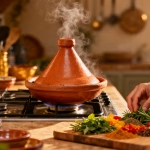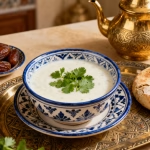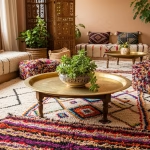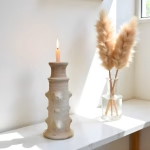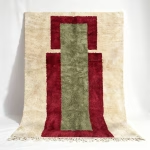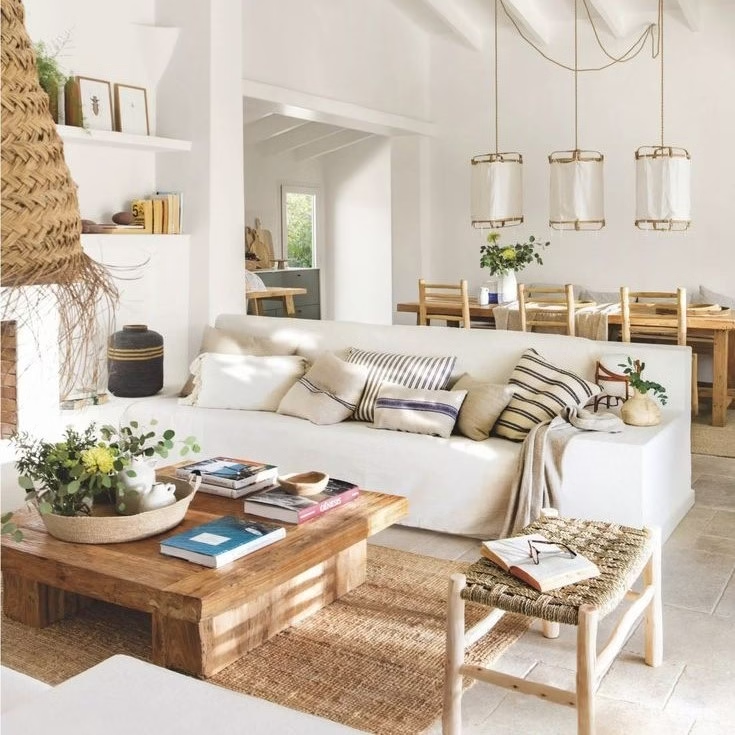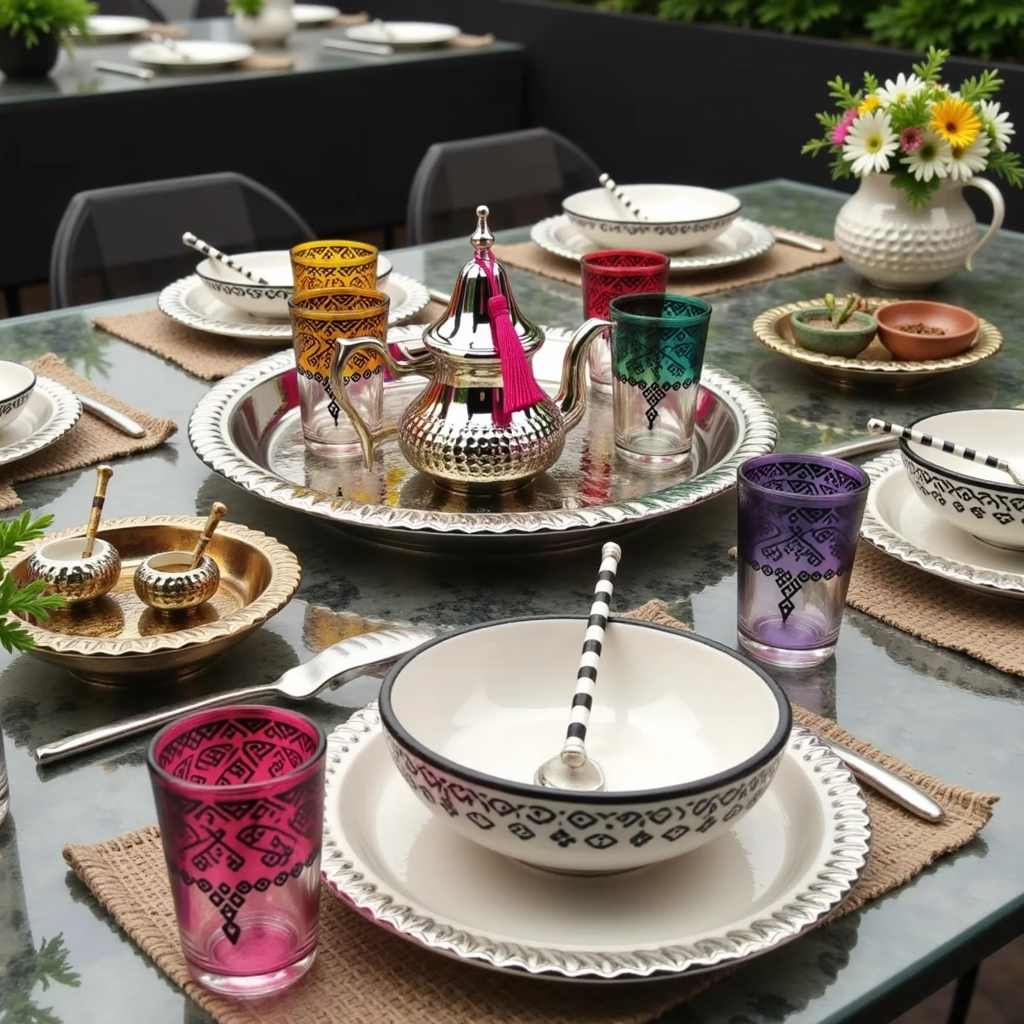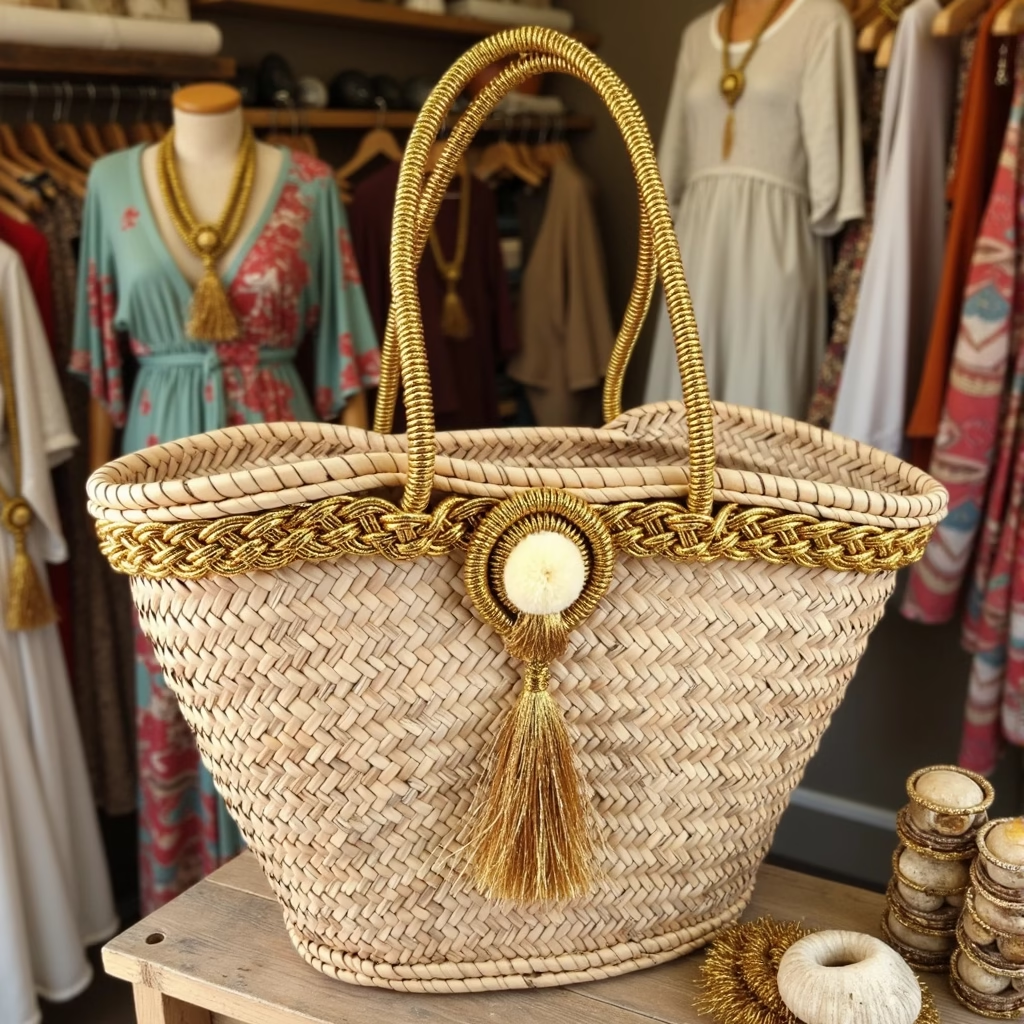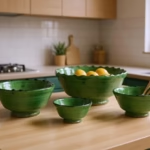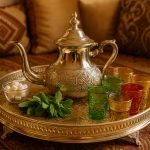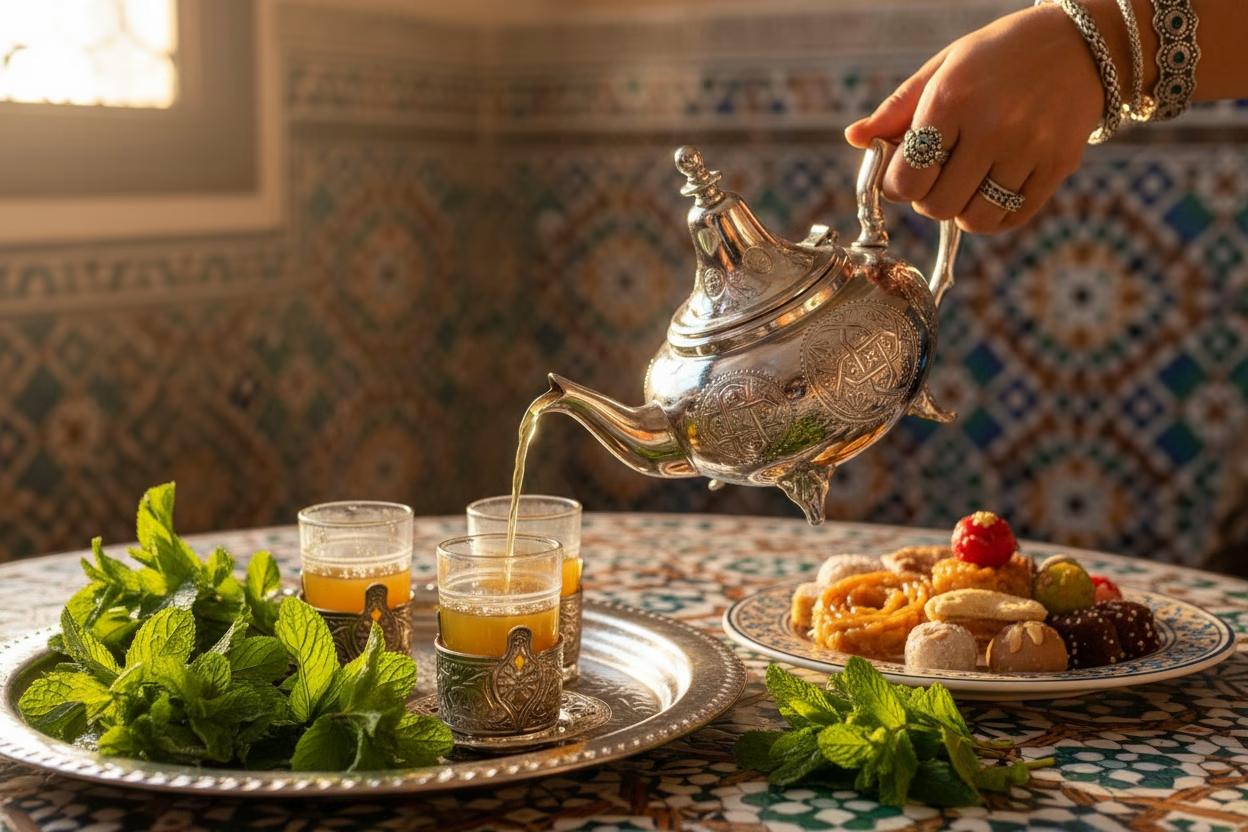
In Morocco, tea is far more than a beverage—it’s a ritual, a gesture of hospitality, and a thread woven through the fabric of daily life. The Moroccan tea ceremony, with its graceful pouring technique and sweet, minty flavor, represents centuries of tradition where every element, from the choice of vessel to the height of the pour, carries meaning. Whether you’re captivated by Moroccan culture or simply want to elevate your tea-drinking experience, understanding this beautiful ceremony opens a window into a world where slowing down and savoring the moment is an art form.
The Soul of Moroccan Hospitality
Walk into any Moroccan home, shop, or even a business meeting, and you’ll likely be greeted with the same warm phrase: “Would you like some tea?” This isn’t a casual offer—it’s a fundamental expression of welcome and respect. Refusing tea, especially on a first offer, can be considered impolite, as it symbolically rejects the host’s hospitality.
The ceremony itself transforms a simple drink into a social experience. Preparing and serving Moroccan mint tea—known locally as “atay” or “whiskey berbère”—is traditionally the domain of the head of the household, often the eldest male, though this varies by region and family. The preparation is performed with deliberate care, almost like a performance, where guests can appreciate the skill and attention invested in their comfort.
This ritual creates space for conversation, negotiation, and connection. In the souks of Marrakech, shopkeepers will insist you sit and share tea before discussing business. In homes, the tea ceremony marks the transition from the outside world to the intimate space of family and friendship. Time seems to slow, and the act of pouring, sipping, and refilling becomes a meditation on presence and generosity.
The History Behind the Brew
Moroccan tea culture has a surprisingly recent history compared to other tea-drinking nations. Tea arrived in Morocco in the mid-19th century, likely introduced by British merchants seeking new markets during the Crimean War when their usual trade routes were disrupted. The Moroccans, already cultivating abundant fresh mint and possessing a taste for sweet flavors, quickly adapted the imported Chinese gunpowder green tea into something uniquely their own.
The drink spread rapidly across North Africa, becoming so integral to Moroccan identity that it’s hard to imagine the culture without it. The addition of fresh spearmint—nana mint, specifically—and generous amounts of sugar created a flavor profile distinct from any other tea tradition. Some regions add other herbs like verbena, sage, or wormwood, but the classic combination of gunpowder green tea, fresh mint, and sugar remains the standard.
Interestingly, the ceremony’s elaborate pouring technique likely evolved from practical necessity. Pouring from a height aerates the tea, slightly cooling it and creating the prized foam on top—a sign of a well-made tea. This foam, called “the crown,” is considered essential, and a tea without it is seen as poorly prepared.
The Essential Elements: What You Need
Creating an authentic Moroccan tea ceremony requires specific tools, each designed for its particular role in the ritual.
The Teapot: Heart of the Ceremony
The traditional Moroccan teapot is a work of functional art. Crafted from stainless steel or brass, these pots feature a distinctive bulbous body, a long curved spout, and an ornate lid with a decorative finial. The design isn’t merely aesthetic—the rounded body allows tea leaves and mint to circulate freely, while the long spout enables the dramatic high pour that defines the ceremony.
Authentic Moroccan teapots often feature intricate engravings, hammered patterns, or inlaid designs that reflect the metalworking traditions of cities like Fez and Marrakech. The size varies, but most hold between four to six glasses, perfect for family gatherings or welcoming guests.
Tea Glasses: Small but Significant
Moroccan tea glasses are instantly recognizable—small, often decorated with gold or colorful patterns, and designed to showcase the tea’s amber color and foamy crown. Their diminutive size (typically holding just 2-3 ounces) serves multiple purposes: the tea stays hot, guests can enjoy multiple servings without overindulging, and the small portions encourage the social aspect of refilling and continuing conversation.
The glasses are usually heat-resistant and may feature ornate metalwork holders that protect hands from the hot glass while adding decorative flair. A complete set typically includes six glasses, reflecting the communal nature of tea service.
The Serving Tray: Presentation Matters
No Moroccan tea service is complete without a beautiful serving tray. These trays, traditionally made from brass, copper, or silver-plated metal, feature elaborate engravings and patterns. The tray serves both practical and ceremonial purposes—it organizes all the elements of the tea service and elevates the presentation into something special.
Moroccan serving trays often feature intricate geometric or floral patterns that reflect Islamic artistic traditions, where calligraphy and abstract designs take precedence over representational art. The tray becomes a stage for the tea ceremony, framing the ritual in beauty.
The Ingredients: Quality Matters
The tea itself requires three essential components:
Gunpowder green tea: This Chinese green tea gets its name from the tightly rolled leaves that resemble gunpowder pellets. When steeped, these leaves unfurl and release a slightly smoky, robust flavor that stands up to the mint and sugar. Moroccans prefer high-quality gunpowder tea, as inferior varieties can taste bitter.
Fresh mint: Authentic Moroccan tea demands fresh spearmint, preferably the nana variety grown throughout North Africa. The mint should be vibrant, aromatic, and used generously—a proper pot might contain an entire bunch. Dried mint simply cannot replicate the bright, cooling flavor of fresh leaves.
Sugar: Moroccan tea is famously sweet, with some preparations using a 1:1 ratio of tea to sugar. While this might seem excessive to Western palates, the sweetness balances the tea’s bitterness and the mint’s intensity. The amount can be adjusted to taste, but traditional Moroccan tea is decidedly not a low-sugar affair.
The Art of Preparation: Step by Step
Making authentic Moroccan mint tea is a precise process that, once mastered, becomes second nature.
Step 1: Rinse the Tea
Place 1-2 tablespoons of gunpowder green tea in your teapot. Add a small amount of boiling water, swirl gently, and immediately pour it out. This rinses away any dust and slightly softens the leaves, reducing bitterness. Some tea masters perform this rinse twice.
Step 2: Add the Mint and Sugar
Add a large bunch of fresh mint to the pot—don’t be shy; the mint should nearly fill the vessel. Add sugar to taste; traditionally, this means quite a lot, anywhere from 3-5 tablespoons or more, depending on the pot’s size and personal preference.
Step 3: The First Steep
Pour boiling water over the tea, mint, and sugar, filling the pot. Let it steep for 2-3 minutes. The timing is crucial—too short and the flavors won’t develop; too long and the tea becomes bitter.
Step 4: The Taste Test
Pour a small amount into a glass and taste. This isn’t just for quality control; it also begins mixing the sugar, which settles at the bottom. If satisfied, pour the tea back into the pot. If it needs adjustment, add more sugar or mint and steep a bit longer.
Step 5: The Ceremonial Pour
Here’s where the magic happens. Hold the teapot high—at least 12 inches above the glasses—and pour in a steady stream. The height aerates the tea and creates the essential foam. Pour a small amount into each glass, then return to the first glass and continue filling. This ensures each serving has equal strength and sweetness.
The pouring motion should be smooth and confident, almost theatrical. In some traditions, the server will pour, return the tea to the pot, and pour again multiple times to ensure perfect mixing and maximum foam.
Step 6: Serve with Grace
Present the tea on your serving tray, offering it to the eldest or most honored guest first. The tea should be sipped slowly, savored, and enjoyed over conversation. Traditionally, three glasses are served—there’s a Moroccan saying: “The first glass is as gentle as life, the second is as strong as love, the third is as bitter as death.”
Regional Variations and Personal Touches
While the classic mint tea recipe is beloved throughout Morocco, regional variations add delightful diversity.
In the Saharan regions, tea is often stronger and sweeter, sometimes prepared over charcoal for a subtle smoky note. The Berber communities in the Atlas Mountains might add wild herbs like verbena (louisa) or sage, creating more complex flavor profiles.
Some families add orange blossom water for a floral note, while others include pine nuts or almonds as an accompaniment. In summer, extra mint creates a more refreshing drink, while winter preparations might include warming spices like cinnamon or ginger.
The sugar content also varies by region and occasion. While southern Morocco tends toward sweeter preparations, some northern areas use slightly less sugar. Special occasions might call for even more elaborate presentations, with multiple types of cookies, dates, and nuts served alongside.
The Etiquette: How to Be a Gracious Guest
Understanding the social customs surrounding Moroccan tea enhances the experience and shows respect for the tradition.
Accept the first glass: Declining tea, especially initially, can offend your host. Even if you’re not thirsty, accept at least one glass.
Use your right hand: In Moroccan culture, the right hand is used for eating and drinking, while the left is considered unclean. Always accept and hold your glass with your right hand.
Sip slowly: Moroccan tea is meant to be savored, not gulped. Take small sips, enjoy the flavor, and engage in conversation between drinks.
Expect multiple rounds: The ceremony typically involves at least three glasses. Each round is slightly different as the tea continues to steep, with the first being the lightest and the third the strongest.
Compliment the tea: Praising the tea and thanking your host is not only polite but expected. Comments on the perfect sweetness, the foam, or the mint’s freshness are always appreciated.
Know when it’s over: When your host stops refilling glasses or begins clearing the tea service, the ceremony has concluded. This signals a natural end to the visit, though in homes, it might simply mean transitioning to another activity.
The Health Benefits: More Than Just Delicious
Beyond its cultural significance, Moroccan mint tea offers genuine health benefits that have contributed to its enduring popularity.
Green tea is rich in antioxidants, particularly catechins, which support heart health, may reduce cancer risk, and promote healthy aging. The polyphenols in green tea also support brain function and may improve focus and concentration.
Fresh mint aids digestion, which is why tea is often served after meals. It can soothe upset stomachs, reduce bloating, and ease indigestion. Mint also has natural antimicrobial properties and provides a cooling sensation that’s especially welcome in hot climates.
The ritual itself offers mental health benefits. The ceremony’s deliberate pace encourages mindfulness and stress reduction. Taking time to prepare and share tea creates moments of calm in busy days, fostering connection and presence.
Of course, the high sugar content means moderation is wise, and those sensitive to caffeine should be mindful of the green tea’s stimulating effects. But enjoyed as part of a balanced lifestyle, Moroccan mint tea is both a pleasure and a tonic.
Bringing the Ceremony Home
You don’t need to be in Marrakech to experience the magic of Moroccan tea ceremony. With the right tools and ingredients, you can create this ritual in your own home, transforming an ordinary afternoon into something special.
Start by sourcing quality ingredients—good gunpowder green tea and fresh spearmint are non-negotiable. Visit Middle Eastern or specialty tea shops, or order online from reputable suppliers.
Invest in authentic serving pieces. While you can technically make the tea in any pot, using a traditional Moroccan teapot, proper tea glasses, and a beautiful serving tray elevates the experience from merely drinking tea to participating in a centuries-old tradition.
Create the right atmosphere. Moroccan tea ceremony thrives in unhurried settings. Turn off distractions, invite friends or family, and allow the ritual to unfold at its own pace. Consider adding Moroccan music, lighting candles, or serving traditional accompaniments like almond cookies, dates, or honey-soaked pastries.
Practice the pour. The high pouring technique takes confidence and practice. Start lower and gradually increase the height as you become more comfortable. Don’t worry about spills—they’re part of the learning process.
Most importantly, embrace the spirit of hospitality that defines the ceremony. Moroccan tea is about generosity, connection, and creating space for others. When you prepare tea with care and serve it with warmth, you’re participating in a tradition that transcends borders and brings people together.
The Vessels That Make It Possible
The beauty of Moroccan tea ceremony lies not just in the ritual but in the handcrafted tools that make it possible. Moroccan teapots, with their elegant curves and intricate metalwork, are functional sculptures that honor the artisans who’ve perfected their craft over generations. Each hammered detail and engraved pattern tells a story of skill passed down through families in the medinas of Morocco’s ancient cities.
Moroccan tea glasses, whether adorned with gold filigree or featuring vibrant colored patterns, transform each serving into a visual delight. The way light catches the amber tea through decorated glass, the foam crowning the surface—these small vessels turn a simple drink into a feast for the eyes.
And the serving trays, often the centerpiece of Moroccan hospitality, do more than carry tea. These brass and copper masterpieces, etched with geometric precision or flowing floral motifs, create a stage for the ceremony. They gather family and friends around a shared experience, their polished surfaces reflecting candlelight and conversation.
Together, these elements—the pot, the glasses, the tray—form more than a tea service. They’re an invitation to slow down, to honor tradition, and to create moments of connection in a world that too often rushes past them. When you invest in authentic Moroccan tea accessories, you’re not just buying kitchenware; you’re bringing home a piece of a culture that understands the profound importance of taking time to welcome others with grace, warmth, and a perfectly poured glass of mint tea.
